- INVECTED (INVECKED or INVECQUED)
- (adj) The alternative heraldic terms used when a division in the field of a banner of arms or
shield, or the edge of an ordinary, is cut into a series of projecting curves or half
circles strung together – that is with the half-circles facing outward and the points
inward – invecked, envecked, or invecqued – see engrailed
(also armorial bearings,
banner of arms,
coat of arms,
ordinary,
shield, and
scalloped).
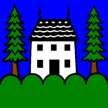

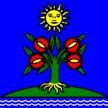
Flag of Oberhof, Switzerland;
Flag of Vestre Slidre, Norway;
Flag of Massagno, Switzerland
- INVERTED
- 1) On flags a term which may be used when a charge or charges, that are (or that
may be) orientated vertically, are shown as being turned upside down (see also
‘chevron’,
‘pall’ and
‘pile’).
- 2) In heraldry see ‘reversed 2)’.

Flag of Cirkulane, Slovenia
- INVERTED CHEVRON
- See ‘chevron 1)’ and
‘chevron 2)’.
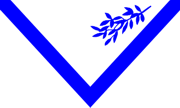
Flag of Birżebbuġa, Malta
- INVERTED PALL
- See ‘pall 1)’.

Flag of Kråkerøy, Norway
- INVERTED PILE
- See ‘pile 1)’.

Flag of Šárovcova Lhota, Czechia
- INVERTED TRIANGLE
- See ‘triangle 2)’.
![[Gay triangle flag]](../images/v/vxt-d009.gif)
A Gay Triangle Flag
- IRISH SALTIRE
- See ‘St. Patrick's Cross’ and its following note.
![[St. Patrick's Cross]](../images/v/vxt-d397.gif)
- IRON CROSS
- The term (derived from an originally Prussian later German military decoration)
that describes a distinctly Germanic form of the cross pattee – see
‘cross pattée’ and
‘Teutonic cross’ (also
‘balkenkreuz’ and
‘Hanseatic cross’).
![[German Naval Jack]](../images/v/vxt-d593.gif)
![[Iron Cross]](../images/v/vxt-d4209.gif)
![[iron cross]](../images/v/vxt-d4567.gif)
Naval Jack 1903–1919, Germany;
Iron Cross 1813, Prussia (Wikipedia);
Flag of the Defense Minister 1933–1935, Germany
Notes
a) The above term should only be used when the cross
pattée being described is black, carries a white or silver border and/or is of Germanic origin.
b) Although based upon a military decoration this cross was ultimately derived from the symbol of the Medieval Teutonic Order as referenced above.
- ISSUANT (or ISSANT)
- The alternative heraldic terms used when a charge emerges out of the base of a field or a chief, from an ordinary
or from the upper edge of a fess, or from a coronet – issant or rising
from –, but see the important note below and ‘naissant 1)’ (also
‘charge 1)’,
‘chief’,
‘coronet 1)’ and
‘fess’).
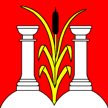
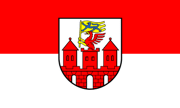
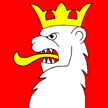
Flag of Sâles, Switzerland;
Flag of Recknitz-Trebeltal, Germany;
Flag of Augst, Switzerland
Please note that in modern heraldry the term for a charge or figure
emerging from the side of a shield, banner of arms or a flag is naissant – see
‘naissant 1)’.
- ITALIAN PROVINCIAL CROWN
- See ‘provincial crown 1)’.
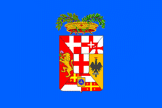
Flag of Alessandria, Italy
- ITALIAN SHIELD
- The term sometimes used to describe a shield of the decorative, post-medieval type most often seen in
Italian personal and civic heraldry but see note below –
a horse-head shield (also Renaissance
Shield).

The Arms of Messina, Italy (ita24)
Please note that several of the terms giving shields a national identity, as well as those
describing a specific type, are still in the process of standardization, and that no consistent approach
has thus far been identified.







![[German Naval Jack]](../images/v/vxt-d593.gif)
![[Iron Cross]](../images/v/vxt-d4209.gif)
![[iron cross]](../images/v/vxt-d4567.gif)






![[Gay triangle flag]](../images/v/vxt-d009.gif)
![[St. Patrick's Cross]](../images/v/vxt-d397.gif)